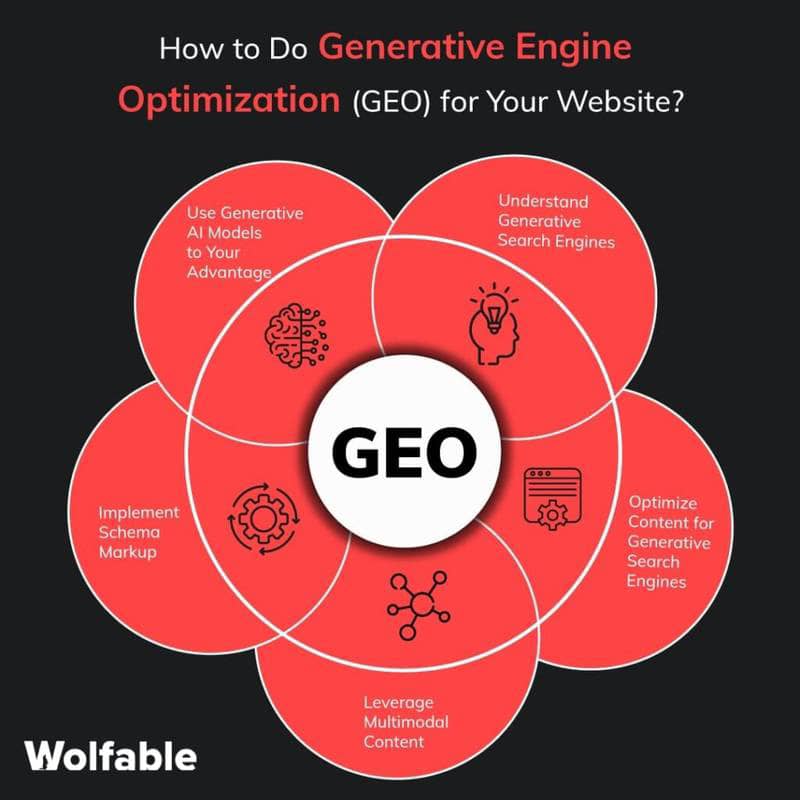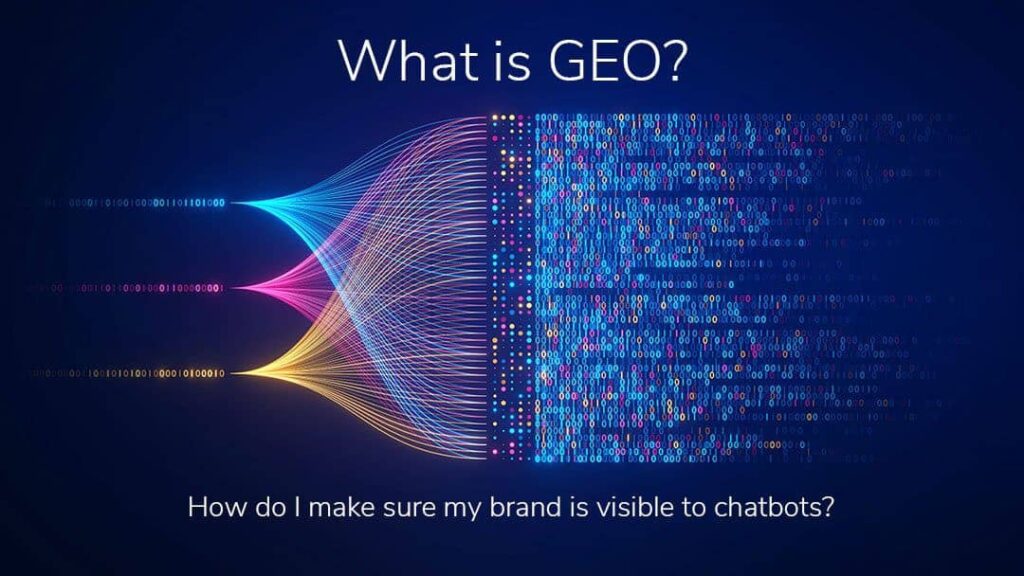
Search is evolving from link-based results to conversational, AI-powered answers. These generative summaries (e.g., Google AI Overviews, ChatGPT responses) are increasingly able to satisfy users’ queries without requiring a click. As a result, traditional SEO may no longer be enough, so it’s time to adapt. This profound evolution has birthed a new discipline: Generative Engine Optimisation (GEO). Also called AI-SEO, Answer Engine Optimisation (AEO), or LLM Optimisation (LLMO), it is the new frontier for brands seeking visibility in AI-driven search landscapes.
GEO presents both a challenge and an opportunity: how can your content remain discoverable, relevant, and trustworthy in a world where AI, not humans, is increasingly the intermediary?
What is Generative AI Optimisation (GEO)?
GEO is the art and science of tailoring your digital content so that it is found by AI tools during content generation, selected as a reliable source, and cited or summarised within AI-generated answers.
Unlike traditional SEO, which optimises search engines like Google or Bing by focusing on keywords, backlinks, and metadata, GEO focuses on how AI systems interpret and quote your content. It involves crafting content that’s not just indexable, but also understandable and contextually relevant to the language model.
Why GEO Now?
AI is no longer just a tool; It’s the new gateway to information.
- Google’s Search Generative Experience (SGE) and AI Overviews are already reshaping how search results are displayed, often reducing the need for clicks to actual websites.
- Tools like ChatGPT, Claude, and Perplexity increasingly answer questions without showing a list of links.
- Forrester predicts that by 2026, 50% of all search queries will be handled by generative AI tools, not traditional engines.
This shift is monumental. Without GEO, your brand risks becoming invisible, even if your traditional SEO is strong.
How Generative AI Choose What to Show
Generative AI models are trained to prioritise:
- Relevance and clarity in language,
- Authority and trustworthiness of a source,
- Semantic coherence across content clusters,
- And ease of parsing, including structured formatting (e.g., headers, bullet points, FAQs).
Simply ranking on page one of Google is no longer enough. Your content must now teach the AI that it is the best possible answer to the user’s query.
GEO Best Practices for Business and Tech Leaders

Here are practical strategies to implement GEO today.
Create AI-Friendly Content Structures
LLMs favour clean, organised content:
- Use H2/H3 subheadings that mirror question phrases (e.g., “What is GEO in SEO?”)
- Incorporate FAQ sections and summaries.
- Present data in bullet points, tables, or short paragraphs for easy interpretation
Write Conversationally Yet Authoritatively
Content written in natural, human language is easier for AI to interpret and quote.
- Avoid jargon unless clearly defined.
- Focus on “explainer” content and how-tos.
- Match user intent with tone. Be helpful, not salesy.
Double Down on E-EA-T
Google and AI engines value Experience, Expertise, Authority, and Trust.
- Use first-hand case studies and expert quotes.
- Include author bios and credentials.
- Link to reputable external sources; AI checks those too.
Optimise for Citability
Generative AI pulls content that is:
- Factual and verifiable,
- From sites with clear ownership and authorship,
- Updates regularly and is contextually relevant.
Adding schema markup, source attributions, and publishing consistent, trustworthy content across your digital ecosystem boosts your chances of being cited.
Brand Visibility Beyond Your Site
AI doesn’t just crawl out of your website; it scans forums, reviews, podcasts, and social media.
- Build a presence on Quora, Reddit, Medium, LinkedIn, and YouTube.,
- Encourage brand mentions in reputable third-party publications,
- Use PR and thought leadership to feed the AI’s training pool.
GEO Strategy Blueprint
1. Discovery & Research
Implement AI tools (ChatGPT, Gemini, Perplexity) to stimulate user queries and review what sources are cited. Target long-tail, natural language questions.
2. Content Creation
Add unique data, proprietary insights, and specialised case studies content that AI can’t easily replicate. Mirror how people speak to make it more AI-friendly. Address granular user intents with precise answers via FAQs & Q&A modules.
3. Technical & Entity Markup
Implement schema (Article, FAQ, Product). Use clear URL structures, descriptive titles, and internal links aligned to topic clusters. Maintain consistent brand metadata across platforms—e.g., via llms.txt, structured author bios.
4. Authority & Off-Page SEO
Build brand mentions in authoritative outlets such as industry sites, academic studies, and reputable forums. Encourage social discussion; AI often indexes social and forum data for perceptions. Use embedded rich media (images, chats, multimedia summaries) to enrich content.
5. Monitoring & Iteration
Track AI visibility metrics by monitoring search console AI impressions and citation frequency. Continuously A/B test schema variants, Q&A placement, and content depth. Keep up with AI model changes—terms, data sources, and presentation style shift rapidly.
Prepare for the Next Generation of Search
The evolution from search engines to answer engines is not a prediction; it’s happening now. Traditional SEO is evolving, and those who adapt to Generative AI Optimisation will stay visible, valuable, and competitive in an increasingly AI-powered world.
The question is no longer “Should we do GEO?” but “How fast can we implement it?”
The future of search is generative. If your SEO tactics haven’t yet hit the generative era, your competitors already have. Optimise for AI-engine or risk fading into irrelevance. Let GEO be your strategy’s next frontier so your brand can be part of the answer.